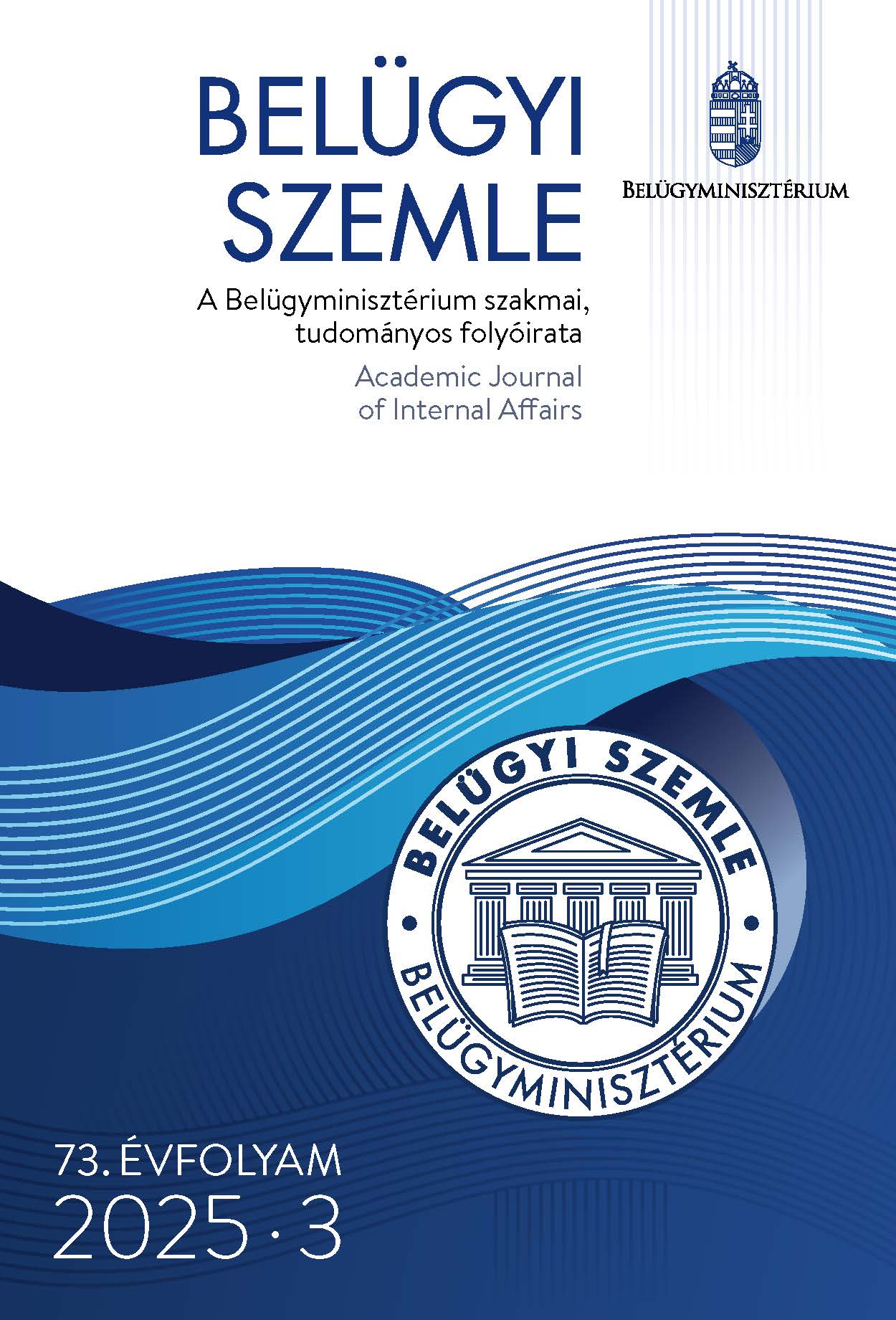Abstract
Aim: The study examines how to keep pace with technological advancements in detection and how to involve the scientific community in the development and integration of innovative solutions into everyday practice.
Methodology: The research showcases the potential of UAV technology in national security operations through the practical example of the innovation collaboration between the Széchenyi István University and the Scientific Innovation Forum of Civil National Security Services.
Findings: The study finds that an innovation strategy and collaboration with the scientific community are crucial in reconnaissance. The application of UAV technology offers advantages, including speed, cost-effectiveness, safety, and environmental friendliness. However, the technology's application may also pose risks, such as limited operational time, weather sensitivity, and cybersecurity challenges.
Value: The study demonstrates the results of innovation collaboration through a practical example. Furthermore, it contributes to a better understanding of the application of drone technology in reconnaissance.
References
Almuhaya, M. A. M., Jabbar, W. A., Sulaiman, N., & Abdulmalek, S. (2022). A survey on LoRaWAN technology: Recent trends, opportunities, simulation tools and future directions. Electronics, 11(1), 164. https://doi.org/10.3390/electronics11010164
Austin, R. (2011). Unmanned aircraft systems: UAVs design, development and deployment. John Wiley & Sons. https://doi.org/10.1002/9780470664797
Bálint K. (2018). UAV-ok napjainkban és a jövőben. Kiberbiztonság–Cybersecurity, 2, 18.
Dinculeană, D., & Cheng, X. (2019). Vulnerabilities and limitations of MQTT protocol used between IoT devices. Applied Sciences, 9(5), 848. https://doi.org/10.3390/app9050848
Fekete Cs. (2022). A UAV-ok állami célú használatának hatályos szabályozása. Közbiztonsági Szemle, 10(1), 22.
Haxhibeqiri, J., Karaagac, A., De Poorter, E., Moerman, I., & Hoebeke, J. (2018). A survey of LoRaWAN for IoT: From technology to appli-cation. Sensors, 18(11), 3995. https://doi.org/10.3390/s18113995
Najak, M. (2018). Smart surveillance monitoring system using Raspberry Pi and PIR sensor. International Journal of Computer Sci-ence and Information Technologies, 9(2), 7107–7109.
Rakha, T. & Gorodetsky, A. (2020). Unmanned aerial system (UAS) applications in the built environment: Towards automated building inspection procedures using drones. In F. Nex & F. Remondino (Eds.), Unmanned aerial remote sensing (pp. 213–230). CRC Press. https://doi.org/10.1201/9780429172410-14
Restás Á. (2017). A UAV-ok közszolgálati alkalmazásának lehetőségei. Új Magyar Közigazgatás, 10(3), 48–62.
Sciancalepore, S., Piro, G., Boggia, G., & Bianchi, G. (2024). Privacy and confidentiality issues in drone operations: Challenges and road ahead. IEEE Network, 38(1), 46–51. https://doi.org/10.1109/MNET.2024.3432730
Soni, D. & Makwana, A. (2017). A survey on MQTT: A protocol of In-ternet of Things (IoT). International Conference on Telecommunica-tion, Power Analysis and Computing Techniques (ICTPACT), 1–6.
Surantha, N. & Wicaksono, W. R. (2018). Design of smart home security system using object recognition and PIR sensor. Procedia Computer Science, 135, 465–472. https://doi.org/10.1016/j.procs.2018.08.198
Takáts A., Bednárik É., Németh N., & Koloszár L. (2023). UAV-os meg-figyelések lehetőségei a katasztrófavédelem és tűzvédelem területén. In Széles Zs. & Szőke T. M. (Szerk.), A mesterséges intelligencia sze-repe a fenntartható gazdasági döntésekben – XVII. Soproni Pénzügyi Napok konferenciakötet (pp. 72–93). Soproni Egyetem Kiadó. http://publicatio.uni-sopron.hu/id/eprint/2931
Vincze G. (2021). A HUSAR pilóta nélküli felderítő- és célmegjelölő rendszer. Haditechnika, 55(4), 33–36. https://doi.org/10.23713/HT.55.4.06

This work is licensed under a Creative Commons Attribution-NonCommercial-NoDerivatives 4.0 International License.
Copyright (c) 2025 Academic Journal of Internal Affairs

